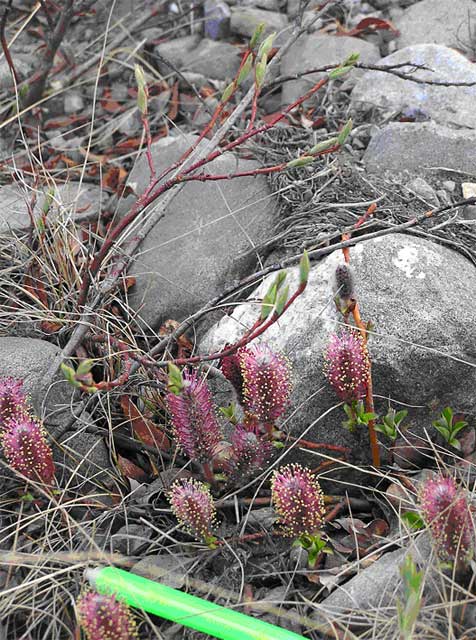 |
|
|
| Author |
Message |
Karen_Bejin

Joined: 23 Mar 2004
Posts: 118

|
 Posted:
Wed Jun 02, 2004 6:47 am Posted:
Wed Jun 02, 2004 6:47 am |
  |
At 6:00 AM we returned to the research site to download data from last night, check the thermistors with a voltmeter to determine the temperature of the soil at two depths, and check the batteries that run different instruments. Batteries at the sites need to be recharged every couple of days. The morning was sunny with songs of birds coming from many hiding places in the tussocks. Two Arctic terns flew above our heads, and a duck was startled from its short-term pool of melted snow.
After completing our morning tasks we returned to have breakfast, and then I was able to speak with my students at home in Wisconsin. Tomorrow we have planned a conference call where I can answer more of their questions. Then it was back out to the research site to check the micro meteorological station. It looks like an ordinary weather station, and it does collect some ordinary readings like wind direction, wind speed, air temperature, and humidity; but in addition to these it collects some less ordinary readings, like amount of shortwave radiation coming from both the sky and the ground, vegetation leaf temperature, and soil moisture content. The micro meteorological station is programmed to collect data on its own, but each day instruments must be checked to make sure they are working, level, and not touching water or the ground. We noticed as we checked the instruments that new flowers are appearing on the tundra. The flowers grow very close to the ground and often have fuzzy stems or flowers, adaptations to protect them from harsh growing conditions.

Flowers are now blooming on the Arctic tundra. They grow very close to the ground to be protected from harsh weather.

More flowers on the tundra.
Checking the depth of the active layer in the tundra tussocks is an interesting job. We have three tussocks that are flagged to check each day. We use a blade and press it through the vegetation until it hits ice, or the permafrost. At the tops of the tussocks the active layer can be several centimeters already, but in the small valleys around the tussocks there is often only a fraction of a centimeter of thawed vegetation before hitting the permafrost. (See yesterday's entry for a description of a tussock, and a picture today.)

This tussock at the tundra site is being checked each day to see the depth of the active layer.

Precision Spectral Radiometer - This is one of the instruments in the Micro Meteorological Station. |
|
|
    |
 |
|
|
|
View next topic
View previous topic
You cannot post new topics in this forum
You cannot reply to topics in this forum
You cannot edit your posts in this forum
You cannot delete your posts in this forum
You cannot vote in polls in this forum
You cannot attach files in this forum
You can download files in this forum
|
Powered by phpBB 2.0.11
© 2001, 2002 phpBB Group :: FI Theme ::
All times are GMT
| |
